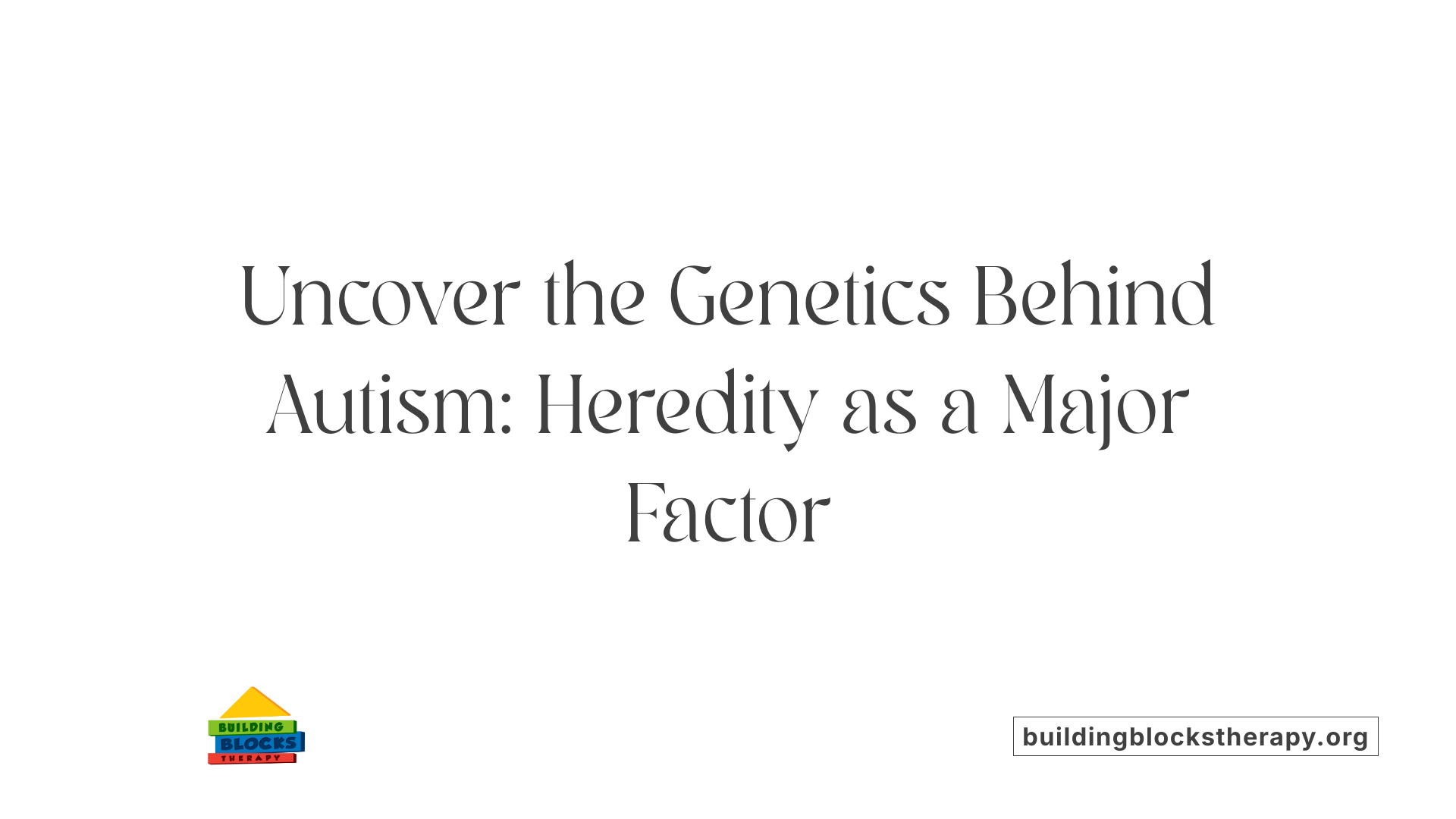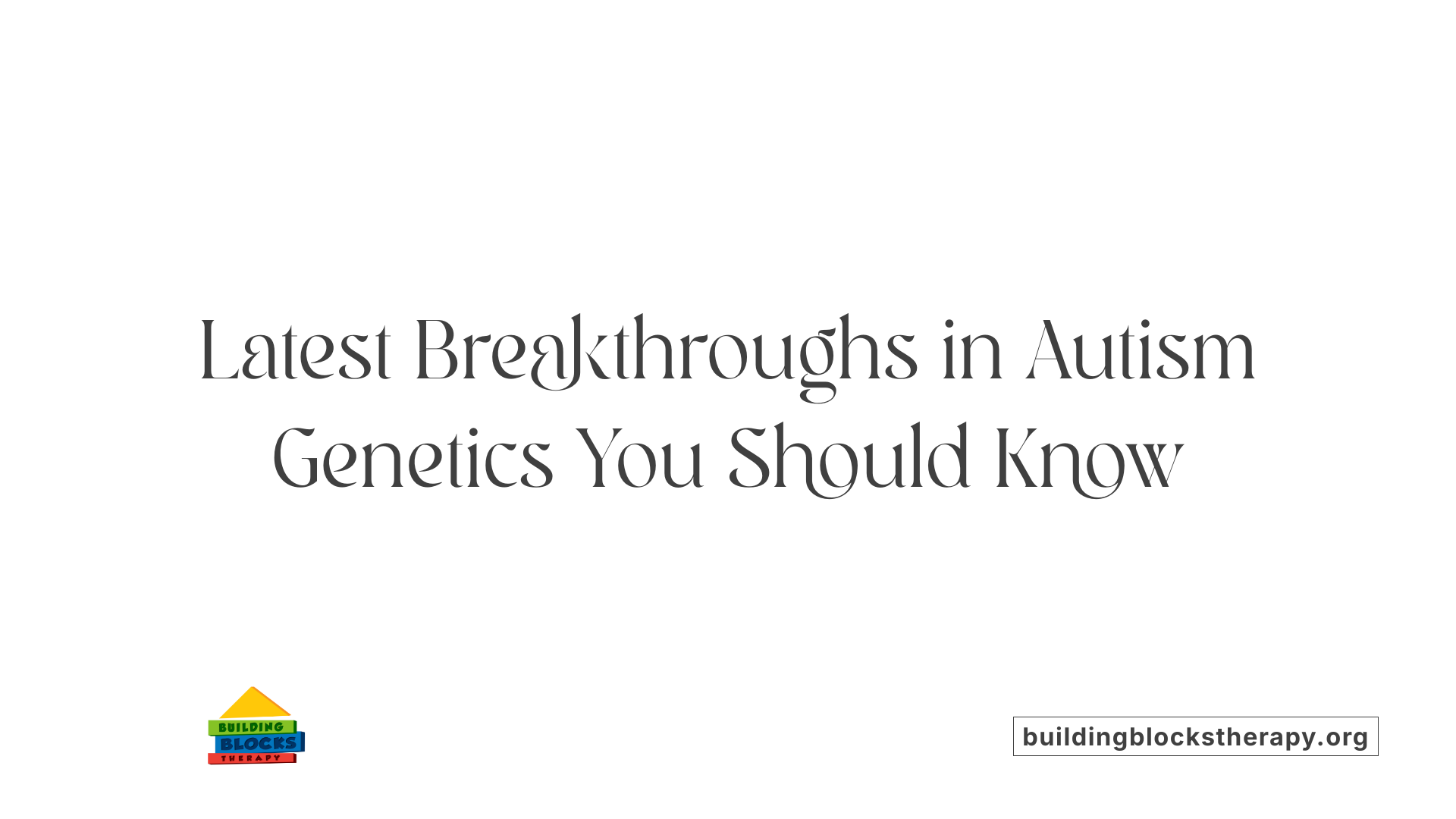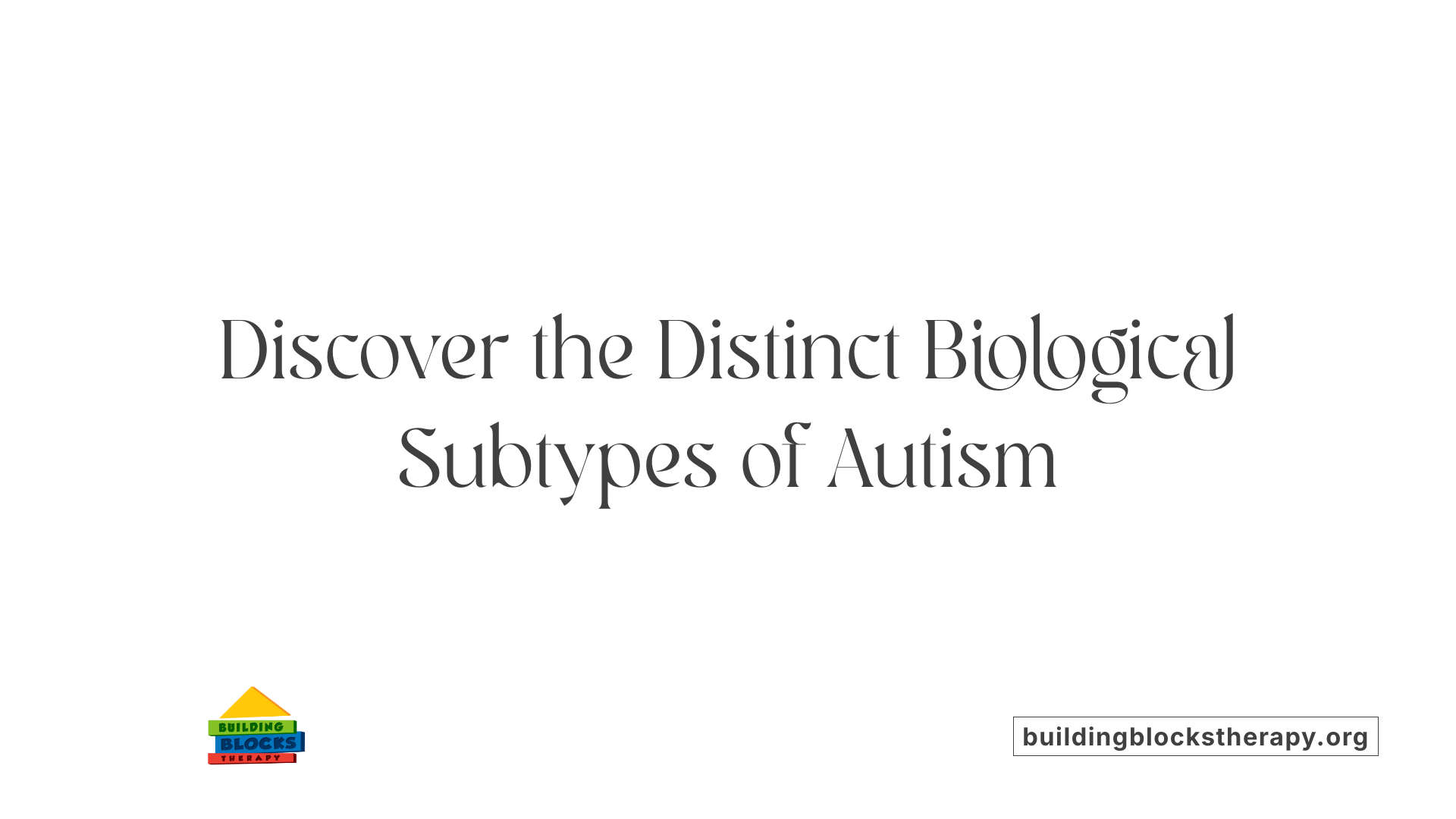Understanding Autism Spectrum Disorder
Autism Spectrum Disorder (ASD) is a complex neurodevelopmental condition characterized by difficulties in social communication and restrictive, repetitive behaviors. With increasing prevalence worldwide, understanding the causes of autism has become a key focus of scientific research. While autism is often misunderstood, it is important to recognize that it is not a mental illness but a difference in brain functioning with significant genetic underpinnings. This narrative explores the role genetics plays in autism, the interaction with environmental factors, and the implications for diagnosis and treatment.
Genetic Foundations of Autism: The Major Role of Heredity

How does genetics influence autism?
Genetic factors play a dominant role in the development of autism spectrum disorder (ASD). Research estimates that genetics contribute between 60% and as high as 90% of the risk for autism, highlighting heredity as the primary driver of the condition.
How many and what types of genes are involved?
Autism susceptibility is influenced by a wide range of genes. Studies have identified around 200 to 1,000 genes that may impact the likelihood of developing ASD. These include rare genetic mutations, copy number variations, and polygenic factors where multiple genetic variants combine to increase risk. Notably, genetic mutations associated with autism can be inherited and sometimes occur de novo (new mutations).
What role do inherited mutations play?
About 80% of autism cases are linked to inherited genetic mutations. Research involving whole genome sequencing of families with multiple autistic children has shown that rare inherited DNA variations passed from parents are significant contributors. Children inheriting these rare mutations, especially alongside multiple common genetic variations, have a higher probability of developing autism. This hereditary pattern is also supported by observations of autism clustering among siblings.
What do twin studies reveal about genetic influence?
Twin studies offer compelling evidence of genetic influence on autism. Identical twins show much higher concordance rates for ASD compared to fraternal twins, underscoring a strong hereditary component. Although early twin studies yielded mixed results, more recent research confirms that genetics largely explain the risk of autism, with environment playing a lesser role.
Together, these findings establish that genetics is the foundational factor in autism susceptibility, supporting precise genetic testing and further research into the numerous genes involved.
Environmental Factors and Their Interaction with Genetics

Rare environmental causes
Environmental contributors to autism are relatively uncommon but notable. Prenatal exposure to substances such as valproic acid and thalidomide has been linked with an increased risk of autism. These exposures during pregnancy highlight the vulnerability of fetal development to certain medications.
Prenatal exposures linked to autism
Beyond medication, other prenatal factors may raise autism risk. These include maternal diabetes, infections during pregnancy, hormonal imbalances, and exposure to air pollution or pesticides. Such factors are believed to influence early brain development and contribute alongside genetic predispositions.
Influence of parental age and maternal health
Advanced parental age at conception, particularly paternal age, is associated with heightened autism risk. Additionally, maternal health conditions — including diabetes and complications during birth — can also increase susceptibility. These factors exemplify how non-genetic elements may intersect with inherited risk.
Interaction between genetics and environment
Autism is predominantly hereditary, with about 80% of risk linked to genetic mutations. However, environmental factors operate in conjunction with genetics rather than in isolation. Studies show children inheriting rare mutations combined with multiple common genetic variations are more likely to develop autism. This synergy between genes and environment underscores a complex etiology where both components influence neurodevelopment together.
Recent Genetic Research and Discoveries in Autism

What Have Whole Genome Sequencing Studies Revealed About Autism?
Recent large-scale whole genome sequencing (WGS) research has significantly advanced our understanding of autism's genetic foundations. Notably, a major study by UCLA Health involving 4,551 individuals from 1,004 families with multiple autistic children uncovered several important genetic factors. This study identified seven potential genes — including PLEKHA8, PRR25, and FBXL13 — associated with increased autism risk. These genes were primarily linked to rare inherited DNA variations passed down from parents, highlighting the critical role of familial inheritance in autism susceptibility.
Which Genes Have Been Linked to Autism?
Researchers have identified more than 100 genes connected with autism, emphasizing the condition's complex, multifactorial genetic landscape. The UCLA study added to this list by pinpointing seven new candidate genes that may contribute to autism when mutated. These discoveries reflect a wider pattern in autism genetics where both rare mutations and common genetic variations collectively influence risk. Other known genetic abnormalities, such as chromosomal deletions or duplications at regions 15q and 16p, also play a role, affecting about 1% of autistic children.
How Does Polygenic Risk Impact Autism?
Polygenic risk scores — which aggregate the effects of many common genetic variants — have emerged as a valuable tool for understanding autism's genetic complexity. The UCLA research demonstrated that children inheriting rare mutations alongside a high polygenic risk score from unaffected parents have a greater likelihood of developing autism. This interplay between rare and common variants provides insight into how multiple genetic factors combine to affect autism susceptibility.
Is There a Genetic Link Between Autism and Language Delay?
Language delay is a frequently observed trait in autism, and recent studies suggest a strong genetic connection. In particular, children with autism who experience language delays were found to have higher polygenic scores associated with autism. This phenomenon was not observed with other neuropsychiatric traits such as schizophrenia or bipolar disorder, suggesting that language impairment might be a fundamental component of autism. This new understanding paves the way for further research targeting the genetic bases of language development in autism.
| Aspect | Details | Significance |
|---|---|---|
| Whole Genome Sequencing | Sequenced thousands of individuals in multiplex families | Identification of rare gene variants linked to autism |
| Autism-Associated Genes | Over 100 genes including PLEKHA8, PRR25 identified | Highlight autism's polygenic nature |
| Polygenic Risk Scores | Combination of rare mutations and common variants studied | Explains inherited risks influencing autism |
| Genetic Link to Language Delay | Higher polygenic scores in autistic children with language delay | Suggests language impairment as core symptom |
This expanding genetic knowledge is vital for precision diagnosis and personalized intervention strategies in autism spectrum disorder.
Biological Subtypes of Autism and Genetic Diversity

What are the distinct autism subtypes based on genetics?
Recent research involving over 5,000 children has led to the identification of four biologically distinct subtypes of autism spectrum disorder (ASD). These subtypes are:
- Social and Behavioral Challenges
- Mixed ASD with Developmental Delay
- Moderate Challenges
- Broadly Affected
Each subtype shows unique developmental milestones, co-occurring conditions, behavioral patterns, and genetic profiles that differentiate them from one another.
What are the implications for biological mechanisms?
The genetic differences underlying these subtypes suggest that diverse biological mechanisms contribute to ASD. For example, the Broadly Affected group has a higher proportion of damaging de novo mutations, which are new mutations not inherited from parents. Meanwhile, the Mixed ASD with Developmental Delay group shows a predominance of inherited genetic variants. This diversity points to multiple pathways in brain development and function that can lead to autism.
How do developmental timelines vary across subtypes?
These subtypes also demonstrate different timing in their genetic disruptions. Some show alterations affecting early brain development, while others manifest changes that appear later in childhood. This variation indicates that autism is not a single developmental process but rather a spectrum of neurodevelopmental changes occurring along different timelines.
What is the potential for precision medicine in autism?
The discovery of autism subtypes based on genetic and biological data marks a paradigm shift from a one-size-fits-all approach to a precision diagnosis and intervention model. By understanding the distinct genetic profiles, clinicians can target therapies and early interventions more effectively. This personalized approach holds promise to improve outcomes by tailoring treatment plans to the unique biological mechanisms affecting each individual with autism.
Diagnostic Challenges and Advances
Current Behavioral Diagnostic Methods
Autism Spectrum Disorder (ASD) diagnosis primarily relies on behavioral assessments due to the absence of definitive medical tests. Tools like the Autism Diagnostic Observation Schedule (ADOS) are widely used to observe social communication difficulties and repetitive behaviors. Diagnosis typically occurs before the age of three, as symptoms such as delayed language and difficulty responding to social cues emerge alongside developing social skills.
Exploration of Molecular and Digital Biomarkers
Researchers are actively exploring biomarkers to enhance early and precise diagnosis. These include neuroimaging classifiers, EEG patterns, eye-tracking data, and gene expression profiles. Additional areas under investigation are inflammatory markers and gut microbiota, which may provide insights into biological mechanisms underlying ASD.
Lack of a Single Definitive Medical Test
Despite extensive research, no single medical test currently can conclusively diagnose autism. The heterogeneity of ASD—with varying genetic and environmental influences—complicates establishing a universal biomarker or diagnostic tool. Thus, diagnosis remains heavily dependent on clinical observation and behavioral screening.
Potential Early Diagnostic Tools
Emerging technologies aim to detect ASD earlier and more accurately. Digital therapies and non-invasive brain stimulation are under study to potentially complement diagnostic processes. Advances in molecular diagnostics, including targeted molecular drugs and hormone therapies like oxytocin, may also contribute to personalized interventions once early detection improves.
Together, these advances signify a promising shift toward earlier, more biologically informed diagnosis strategies that could enhance personalized care and outcomes for individuals with autism.
Genetic Conditions and Syndromes Associated with Autism

Fragile X Syndrome and Tuberous Sclerosis
Fragile X Syndrome and Tuberous Sclerosis are two well-known genetic conditions that significantly increase the risk of autism. Fragile X Syndrome, caused by mutations in the FMR1 gene, is the most common inherited cause of intellectual disability and autism. Tuberous Sclerosis, resulting from mutations in either the TSC1 or TSC2 genes, leads to benign tumors in various organs and is frequently accompanied by autism spectrum disorder (ASD).
Chromosomal Deletions and Duplications
Autism has also been linked to chromosomal abnormalities, particularly deletions and duplications in specific regions of the genome. Notably, deletions or duplications in the 15q and 16p regions are found in about 1% of autistic children. These copy number variations (CNVs) disrupt normal neuronal development and contribute to ASD risk.
Rare Genetic Diseases Linked to Autism
Beyond Fragile X Syndrome and Tuberous Sclerosis, several rare genetic diseases are associated with autism. Conditions such as Congenital Rubella Syndrome and Phenylketonuria (PKU) have a higher incidence of autism among affected individuals. These diseases often result from specific gene mutations or metabolic dysfunctions influencing brain development.
Genetic Testing Recommendations
Given the genetic complexity of autism and its association with various syndromes, genetic testing is strongly recommended following an autism diagnosis. Tests like chromosomal microarray analysis and DNA sequencing can identify underlying genetic causes, guide clinical management, and inform family planning decisions.
These genetic insights highlight the importance of understanding the diverse biological underpinnings of autism, facilitating early diagnosis and personalized intervention strategies.
Misconceptions about Autism and Genetics
Debunking the Vaccine-Autism Myth
Despite the persistence of some beliefs, there is no scientific evidence that vaccines cause autism. Extensive research over decades has confirmed that vaccination is not linked to autism, firmly debunking this myth which often distracts from understanding the true causes of the disorder.
Clarifying Intellectual Disability Misconceptions
Many mistakenly assume that autism inherently involves intellectual disability. However, most individuals with autism do not have intellectual disabilities. Autism is a spectrum, and cognitive abilities vary widely, with many people demonstrating average or above-average intelligence alongside their social and communication challenges.
Understanding Autism as Neurodevelopmental Not Mental Illness
Autism is classified as a neurodevelopmental disorder rather than a mental illness or a simple disability. It reflects differences in brain development affecting social interaction and behavior, which begins in fetal development and manifests early in childhood. This distinction helps shift public perception towards recognizing autism as a different way of processing the world rather than a mental health problem.
Public Understanding of Autism Genetics
Autism’s roots are strongly genetic, with studies showing 60 to 90% of autism risk linked to inherited or spontaneous genetic variations. Approximately 80% of autism cases are associated with inherited mutations affecting hundreds to thousands of genes. Still, genetic complexity and the interaction with rare environmental factors contribute to the spectrum’s diversity. Educating the public about these genetic influences fosters a more accurate understanding of autism beyond common myths.
Implications of Genetic Insights for Treatment and Intervention
Role of Early Diagnosis and Behavioral Therapies
Genetic insights emphasize the importance of early diagnosis in autism spectrum disorder (ASD). Behavioral therapies started before age three can significantly improve social, communicative, and adaptive outcomes. Early intervention harnesses neuroplasticity during critical developmental windows.
Applied Behavior Analysis (ABA)
ABA therapy remains a cornerstone treatment backed by decades of evidence. It targets observable behaviors through structured reinforcement techniques, making it effective across the autism spectrum regardless of the specific genetic causes identified. ABA helps develop communication, social skills, and reduces restrictive behaviors.
Management of Co-Occurring Conditions
Autistic individuals often face additional challenges such as ADHD, anxiety, insomnia, or epilepsy. Treatment plans frequently include behavioral therapies and, when necessary, medication—such as aripiprazole or risperidone to manage irritability. Addressing these conditions holistically enhances overall quality of life.
Toward Personalized Treatment Strategies
Advances in genetic research, including identification of genes linked to specific autism subtypes, open pathways for personalized therapies. Understanding a person’s genetic and biological profile can guide targeted interventions and improve the precision of care. This paradigm shift aims at customizing treatment to the unique neurodevelopmental features and needs of each individual.
The Genetic Mosaic of Autism: Moving Toward Personalized Understanding and Care
The evidence overwhelmingly highlights the pivotal role genetics play in autism spectrum disorder, with an intricate mosaic of gene mutations, inherited variations, and their interaction with environmental influences shaping the risk. While no single gene causes autism, ongoing research is unraveling the complex polygenic nature of ASD and its diverse subtypes. Advances in genomic technologies and biological markers promise earlier and more precise diagnosis, while understanding genetic diversity fuels the development of tailored interventions. Dispelling misconceptions remains essential as families and professionals work together to support individuals with autism. Ultimately, the genetic insights into autism offer hope for more effective, personalized approaches that acknowledge each person’s unique neurodevelopmental profile.
References
- Is Autism Genetic?
- Autism Spectrum Disorder (ASD) Symptoms & Causes
- What causes autism?
- New genetic clues uncovered in largest study of families ...
- Understanding autism: Causes, diagnosis, and advancing ...
- What Is Autism Spectrum Disorder?
- Major autism study uncovers biologically distinct subtypes, ...
- Genetics and Genomics Research | Autism: Finding the genes ...
- Is Autism Genetic? Breaking Down What is Known about ASD.






